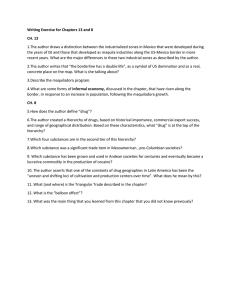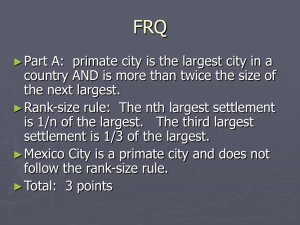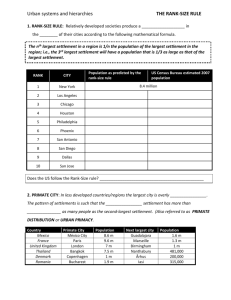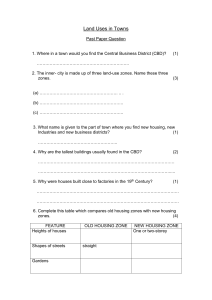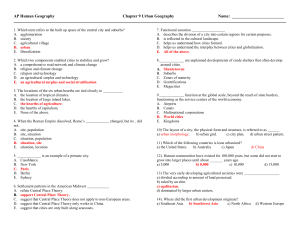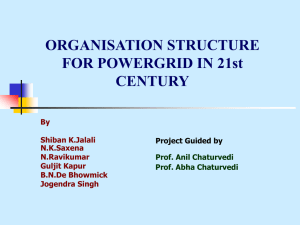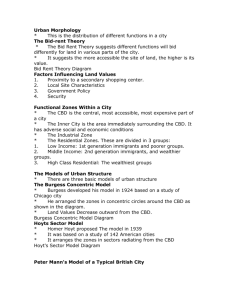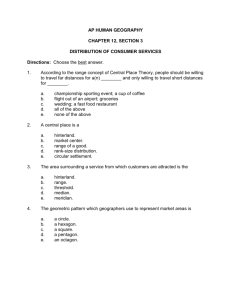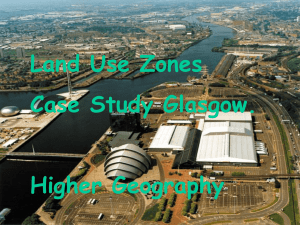Where are Cities Located and Why?
advertisement
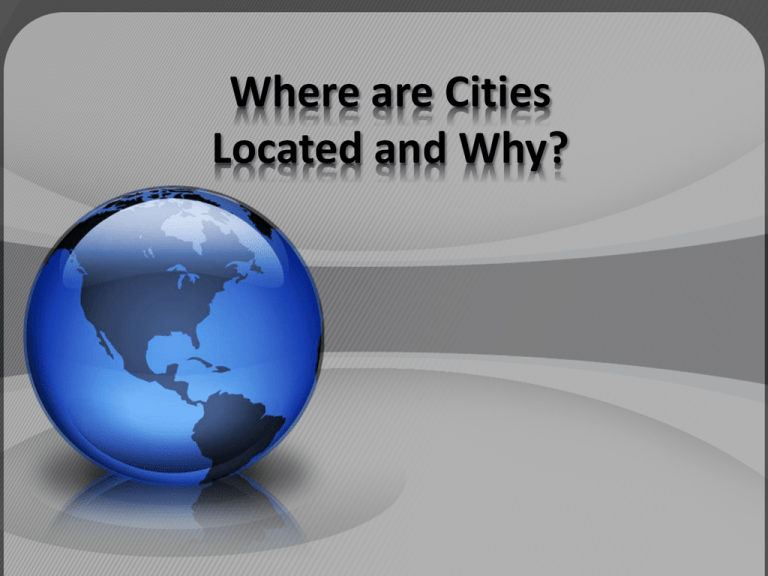
Where are Cities Located and Why? Site and Situation Site * absolute location of a city * a city’s static location, often chosen for trade, defense, or religion. Situation * relative location of a city * a city’s place in the region and the world around it. Trade area Trade area – an adjacent region within which a city’s influence is dominant. Green Country, Oklahoma Rank-Size Rule: in a model urban hierarchy, the population of the city or town will be inversely proportional to its rank in the hierarchy. The nth largest city will be 1/n the size of the largest city in that country. For example: largest city = 12 million 2nd largest = 6 million 3rd largest = 4 million 4th largest = 3 million Primate City The leading city of a country. The city is disproportionately larger than the rest of the cities in the country. For example: London, UK Mexico City, Mexico Paris, France - the rank-size rule does not work for a country with a primate city Central Place Theory Walter Christaller developed a model to predict how and where central places in the urban hierarchy (hamlets, villages, towns, and cities) would be functionally and spatially distributed. Assumed: surface is flat with no physical barriers soil fertility is the same everywhere population and purchasing power are evenly distributed region has uniform transportation network from any given place, a good or service could be sold in all directions out to a certain distance Hexagonal Hinterlands C = city T = town V = village H = hamlet Urban Structure Urban Morphology The layout of a city, its physical form and structure. • Functional Zonation – The division of the city into certain regions (zones) for certain purposes (functions). Zones of the City • Central business district (CBD) • Central City (the CBD + older housing zones) • Suburb (outlying, functionally uniform zone outside of the central city) Modeling the North American City • Concentric zone model (Ernest Burgess) • Sector model (Homer Hoyt) • Multiple Nuclei Model (Chauncy Harris and Edward Ullman) Three Classical Models of Urban Structure Edge Cities Suburban downtowns, often located near key freeway intersections, often with: - office complexes - shopping centers - hotels - restaurants - entertainment facilities - sports complexes Urban Realms Model Each realm is a separate economic, social and political entity that is linked together to form a larger metro framework. Modeling the Cities of the Global Periphery and Semiperiphery • Latin American City (Griffin-Ford model) • African City (de Blij model) • Southeast Asian City (McGee model) Latin American City (GriffinFord model) Disamenity sector – very poorest parts of the city eg. the favelas of Rio de Janeiro, Brazil The African City (de Blij model) Southeast Asian City (McGee model)
